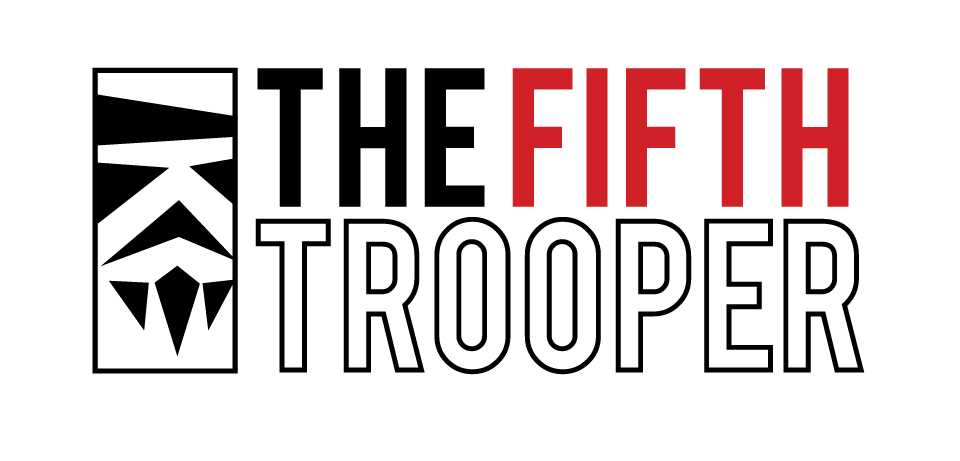As far as I understand it, old timey philosophers would explore topics by presenting two or more characters arguing different sides of a topic. A quick bit of googling seems to tell me I’m not too off track. In fact, it has the fancy name “Socratic Dialogue”. As such, today I will demonstrate that I am not only the Stephen Hawking of Shatterpoint, but I am also the Socrates of Shatterpoint. Additionally, I am the most humble blog writer I know, but that’s obvious.
Everywhere I go, I see people saying “condition X is best” and “no, condition Y is best” so let’s now settle it once and for all. I will go condition by condition, presenting the case for each being the best. And of course, I will also present the case against, as the fathers of philosophy would want.
 Disarm
Disarm
I think disarm is generally viewed as the worst condition. Since I am no coward, I must of course come out swinging and argue instead that it is the best!
The Case For Disarm:
The Shatterpoint attack die has 8 sides: 1 crit, 3 strikes, 2 expertise, and 2 failures. If we loosely approximate 1:1 expertise-to-strikes/crits, disarm makes each attack die 50% to hit, rather than 75%. That’s a huge reduction! On an 8 dice attack that’s 4 results coming through instead of 6. That’s potentially two less spots on an attack tree.
So we just did a lot of rough approximations. Let’s look at what the numbers have to say. I like to use Captain Rex as my baseline, middle-of-the-road defender. The table below shows the average successes post-defense when various characters attack Rex, with and without disarm. For the cases studied, disarm decreases the number of successes by 1.5 on average. A bit lower than the back of the napkin estimate above, but still pretty good! Even the best attackers are only averaging one or two spots down the tree once disarmed. Remember as well that Rex has no crit mitigation. On an 8 die pool we’d except on natural crit to bypass his defense regardless of expertise.
| Attacker | Stance | Type | Regular | Disarmed | Change |
|---|---|---|---|---|---|
| Barriss | Form II Soresu | Melee | 2.4 | 1.1 | -1.3 |
| Rex | Tactical Supremacy | Melee | 2.8 | 1.4 | -1.4 |
| Dooku | Form II Makashi | Melee | 3.3 | 1.4 | -1.9 |
| Vader | Dark Rage | Melee | 3.3 | 1.4 | -1.9 |
| Anakin | Form V Djem So | Melee | 3.5 | 1.8 | -1.7 |
| Jango | Resourceful Gunslinger | Ranged | 2.4 | 1.1 | -1.3 |
| Kraken | Ruthless Logic | Ranged | 3.0 | 1.4 | -1.6 |
| Magnas | Defensive Programs | Melee | 2.4 | 1.1 | -1.3 |
| Talzin | Great Mother | Ranged | 3.0 | 1.4 | -1.6 |
| Padme | Aggressive Negotiations | Ranged | 2.8 | 1.4 | -1.4 |
Average successes past defense against Clone Captain Rex
Disarm especially stands out in one category: it is generally the most effective condition on a wounded unit. A wounded MagnaGuard with an expose doesn’t care, they’ll remove it when they activate. But when Kalani tells that MagnaGuard to attack with Tactical Network, suddenly the disarm is hugely important. On a small 5 dice pool, magnas are counting on crits (generally through expertise) to bypass defenses. A 5 dice magna attack on Rex averages 2 successes past defense. A disarmed attack averages 0.85. Two successes is a double shove that can bypass Steadfast and get someone off an objective no matter how close they are. One less success can be the difference between holding a point and not.
Overall, less hits going through against your characters means your team stays alive and in position longer, keeping control of objectives. Having warm bodies around is critical for creating certain types of swing. Moving a wounded body out-of-activation won’t usually change the objective math. Less wounds also means your abilities stay cheap so there is less strain on your force economy. A disarmed enemy has a chance to have a meaningless activation and even one meaningless activation can be hard to come back from with the fast pace of struggles 2 and 3. Clearly disarm is the best condition!
The Case Against Disarm:
Matt, you’re an idiot! You’re trying to sound smart by being a contrarian, but the wisdom of the crowd is correct here. Disarm is definitely the worst condition. Sure, maybe it helps against out-of-activation magna attacks, but that is a very narrow case to stake a “this is the best condition” claim to. There’s a lot of units in the game that aren’t performing out-of-activation attacks. Most of them in fact. If the effect of disarm is limited to just the unit’s activation then it gives you a long window to heal the condition off. It’s easier to heal a disarm before it triggers than it is to heal expose, strain, or pin before they trigger.
Disarm also loses effectiveness on multi-character units. It’s possible that one character burns the disarm on a meaningless attack so that the important attack benefits from expertise. It’s also possible that a disarmed character rolls no expertise. How can disarm be so good when it can have no effect?
Finally, let’s look at that fancy table. Seems like you cooked the data by choosing attacking characters with good or great expertise. What if we look at the effect of disarm on some less stellar attackers? For this new selection below, the average change is now 0.8 instead of 1.5. Do some of these offensive expertise give more than just results? Sure, but you’re saving maybe one damage on average there. If we take a look at this table and the one above, the average effect of a disarm is around one less success on average. That success may or may not be all that impactful.
| Attacker | Stance | Type | Regular | Disarmed | Change |
|---|---|---|---|---|---|
| 501st | Advanced Combat Training | Ranged | 2.0 | 1.4 | -0.6 |
| Aurra | Not Asking Permission | Ranged | 2.1 | 1.4 | -0.7 |
| Mace | Form VII Vaapad | Melee | 2.6 | 1.4 | -1.1 |
| Maul | Dark Rage | Melee | 2.4 | 1.4 | -1.0 |
| Obi-Wan, Out of Hiding | Form III Soresu | Melee | 2.0 | 1.2 | -0.8 |
Average successes past defense against Clone Captain Rex
So we’ve established that disarm may not have any effect, and even when it does mean less successes, less successes may not actually have much impact. That’s too many layers of possibly being useless for my liking. At the end of the day, Shatterpoint is a game where offense overpowers defense. Disarm is an inherently defensive condition, so it stands to reason that it will be an underwhelming condition.
 Expose
Expose
Since we’re already talking about removing expertise results, why not swap things around and look at expose?
The Case For Expose:
I would like to start by saying that Negative Matt attacked me for trying to be contrarian. I will now prove that dummy wrong by siding with what I think is the majority opinion: expose is the best condition! With the recent release of ARF and Nightsister Acolytes, the expose hype train is real. I’ve been playing a lot of ARFs myself and I will say that I often spend force for Coordinated Fire: Expose once they become wounded/injured. I’m not usually paying force for any of the other conditions. That’s probably all I need to say really, but alas I like to hear myself talk, so I’ll continue.
Expose is a condition that opens up completely new avenues of play. In the before times of the long, long ago (June 2023), it often seemed pointless to attack primaries. I especially felt this with units like 212th clones, who I find mainly get down their tree via crits. Primaries often have crit mitigation, but not when they are exposed! Expose is a great equalizer that often makes primaries just as easy to wound as supports. Defensive expertise has a lot of effects beyond crit mitigation as well. The main effect I want to avoid is jumps/moves. If my attack shoves a character off of the objective, I don’t want them jumping back on. Pin can sometimes help here, but now we have characters like Cad Bane who get both a jump and a heal together (I guess Maul always had that, but I rarely have him in Dark Rage). A simple pin can be healed off and thus Cad can still jump, but an expose takes all of that away while also removing blocks.
I looked at the attack die previously, now on to the defense die. The Shatterpoint defense die includes two each of blocks, expertise, and failures. An expose is essentially removing half of the useful results. Now, on average most characters don’t have 1:1 expertise-to-blocks on defense. However, some do and some even have two blocks for a single expertise. Let’s run the numbers like we did with disarm (see the table below). I don’t have a standard attacker that’s my go-to, so let’s use ARFs (at range). Partly for the irony, but partly because it’s a 7 die attack with decent expertise that includes some crit generation. For the cases examined, average successes past defense increased by 1.4 when the defender was exposed. Somewhat counter-intuitively, the effect was smaller on characters with double blocks on one expertise (Bo, Jango, Maul). Meanwhile, characters with good crit mitigation in their expertise (Luminara, Dooku) suffered the most from being exposed. With the help of an expose, the ARF are consistently moving about 3 spots down their tree, rather than just 1 or 2. For ARF specifically, the second and third spots can give a shove and expose, respectively. Getting a shove reliably helps a lot in the objective game, while getting the expose means the follow up attack hits harder, chaining exposes to create a snowball effect.
| Attacker | Stance | Regular | Exposed | Change |
|---|---|---|---|---|
| Asajj | Jar’Kai | 1.7 | 3.1 | 1.4 |
| Bo-Katan | Close Support | 2.1 | 3.4 | 1.3 |
| Dooku | Form II Makashi | 1.4 | 3.1 | 1.7 |
| Jango | Resourceful Gunslinger | 1.8 | 3.1 | 1.3 |
| Luminara | Form III Soresu | 1.1 | 2.8 | 1.7 |
| Maul | Sinister Cunning | 1.6 | 2.8 | 1.2 |
Average successes past defense for ARF ranged attacks
Negative Matt argued against disarm because it had a large window to heal. He can’t say this about expose. Things like Coordinated Fire: Expose give no opportunity to heal it off. If I end my turn with an exposed enemy, my opponent has only one activation to heal that unit before I can potentially shoot it again and make use of the expose. He argued that Shatterpoint is a game about offense, not defense. As such, the added offense from expose should make him see that it’s the best condition, right?
The Case Against Expose:
Positive Matt has fallen into a classic trap. He speaks of how he will pay force for Coordinated Fire: Expose but not for other conditions. The fool! He is conflating best condition with best timing for a certain condition. His example does not mean expose is the best condition, rather Coordinated Fire: Expose is the best application of a condition we currently have. This point I will concede, however I stand firm that it doesn’t mean expose is the best condition. Some day we may get an effect that disarms an attacker right before they attack, or pins someone right before they move. I contend that these could be even better than Coordinated Fire: Expose. Right now we just don’t have the perfect delivery vehicle for the three non-expose conditions.
Once again, let’s scrutinize the cherry-picked data presented by Positive Matt. As we look at attacks on some less-defensive units, shown in the table below, we see a smaller effect for expose. How convenient that he forgot about Rex, his “baseline, middle-of-the-road defender”, as soon as he wanted to demonstrate the effect of expose on the defender. Defending against ARFs at range, 0.9 more successes get by on average against Rex, or 0.8 on average for the defenders in the table below. Both numbers are quite a bit less than the 1.4 touted above.
| Attacker | Stance | Regular | Expose | Change |
|---|---|---|---|---|
| B1s | Countless | 3.0 | 3.4 | 0.4 |
| Rex | Tactical Supremacy | 2.2 | 3.1 | 0.9 |
| Handmaidens | Absolute Loyalty | 2.2 | 3.1 | 0.9 |
| Kalani | Cold Logic | 2.6 | 3.3 | 0.7 |
| Talzin | Great Mother | 1.5 | 2.6 | 1.1 |
Average successes past defense for ARF ranged attacks
A lot of the arguments used against disarm are valid for expose. The defender may not even roll any expertise results. Even if expose has an effect, one spot on a combat tree may not be all that consequential. I also have two new arguments as to why expose can’t be the best condition. First, there are a number of abilities to make units immune to the condition. Obi2 (known in Seattle as Hobo-Obi – Doc), Ponds, and Luke all have ways to prevent exposure. Second, expose doesn’t mess with the action economy of enemies like the other three conditions do. If I am activating one of my units with an expose it doesn’t worry me much during their activation. However, if I am activating a unit with pin, strain, or disarm, then I might not be able to do what I need to on that turn (or at least need to spend extra resources to do it).
Sure, exposing someone right before you attack them feels great. Sometimes it will make a big difference, sometimes it won’t make any difference. One sometimes-useful interaction does not make expose the best condition.
 Pin
Pin
Oh man, things are getting a bit personal here. Perhaps we can diffuse the situation by talking about pin. Why would I think that? I don’t know.
The Case For Pin:
Wow, Matt Prime is grasping at straws there. Of course, that guy has never been the brightest tool in the shed. Anyways, let me tell you why pin is the best condition out there.
Pin wins games. It’s that simple.
The Case Against:
OK wait, I’ll elaborate a bit further. Shatterpoint is a game about having bodies in the right spots to secure objectives. A pin can completely mess that up, sometimes even turning a guaranteed or very likely objective flip into something impossible. Pins are effective in and out of activation. For example, I had a game recently where I activated Padawan Ahsoka. If Mace hadn’t been pinned, she could have moved him onto a far objective, then taken another one, swinging two spots. Pin took that out of the picture completely. Alternatively, a pin on someone like Talzin could make her identity or activation completely useless, or at least force suboptimal plays. There are a lot of times in the late game where an activating character needs to cover significant ground and losing out on a move is crippling. My favourite use of a pin is on an attack that also happens to shove the character into oblivion, messing up their position and making it especially hard to recover.
I know what Negative Matt is going to say: “so many characters have extra move abilities they can use to burn the pin”. Sure, that’s true. But usually that’s at the cost of a force, which is a valuable resource. Or the character needed those move abilities to actually move. Even if they can clear it easily it still comes at a cost. In the best case scenario, pin can be a guaranteed way to stop your opponent from flipping objectives without having to roll dice. That’s an insanely high ceiling and well worthy of being the best condition.
The Case Against Pin (for real this time):
Sometimes I feel like the only intelligent Matt. I mean, Positive Matt has already made my argument for me, thanks! As noted, many characters have move abilities to burn the pin, either in activation or out of activation. Sure pin has a high ceiling, but it is also the easiest condition in the game to remove. I’ve seen pin removed with almost no consequences on many occasions so I’d say it has the lowest floor of all the conditions. With a high ceiling and low floor I’d say it averages out to a good condition, but not the best. Disarming an enemy to prevent a wound or shove can also prevent swing, same with expose to enable a wound or attack. Strain can mess with a unit’s action economy even more than pin does and is much harder to remove consequence-free.
When discussing disarm I noted that it was less effective against multi-character units and the same holds true here. A two character support with a pin will still get to move on mini on a move action, which may be all you need.
Movement is important, but free movement is also plentiful. As such, pin doesn’t reach it’s potential frequently enough to be considered the top condition.
 Strain
Strain
Alrighty, we’re almost done here. As someone who is now being attacked by my alter egos, I for one can’t wait for this to be over. I said earlier that disarm seems to be often viewed as the worst condition, but strain feels like a contender for that designation as well. Let’s see what the Matts think.
The Case For Strain:
Strain is not the worst condition, but I think we can all agree that Matt Prime is the worst Matt. Am I right Negative Matt? Strain is actually awesome in the way it can completely mess up a unit’s action economy.
If a unit becomes wounded during their own activation they immediately end their activation. That is something you never want to happen. If a unit starts with three or less stamina remaining and a strain then they usually have to burn one of their two actions recovering to heal it away. Wasting an action like that is rough. In competitive Shatterpoint games every single activation needs to contribute. If I have an ineffective activation because I had to heal off a strain then I am in a bad spot. There are definitely situations where I would have rather been wounded than left on, say, two stamina with a strain. At least if I’m wounded I will heal up and have both actions on my next activation.
Strain also messes up reactive abilities. Say I’m attacking a character with Deflect and apply a strain during the attack. Now the defender is unlike to use Deflect because they’ll take three damage to send two back to the attacker. In similar news, I’ve had clones left with four damage with a strain, so if I want to coordinate fire I’m wounding my own unit. If I attack a unit and they have a jump in their defensive expertise, for example, they may avoid jumping due to the three damage penalty. Strain messes up reactives in a multitude of ways, something pin, expose, and disarm can only dream of.
As noted, stain is tough to burn without taking damage. You can’t get rid of it with a throwaway move or attack like you can with pin and disarm, respectively. You need healing around to deal with it otherwise you’re stuck healing as an action (or suffering the three damage). Three damage is 25% of any unit’s stamina at a minimum, people are going to think twice about triggering it even if it won’t wound them.
The Case Against Strain:
Positive Matt and I actually agree for once. Not about strain being the best condition, of course not! But I do think Matt Prime sucks. I’m glad we could fine some common ground here. Anyway, strain is definitely not the best condition.
I take issue with the whole “strain is hard to remove without consequences” thing. A unit doesn’t actually have to suffer the three damage to remove the strain. This means a wounded unit can trigger and remove the strain with literally no consequences. Much like pin, strain has a high ceiling, except it reaches that ceiling even more infrequently. I can probably count on one hand the number of times I’ve seen a unit activate with three or less stamina left and a strain. If the strain isn’t going to wound me, I’m still doing whatever it takes to flip objectives. Positive Matt uses the example of straining a unit that gets a jump in their expertise. If I have the health to spare I’m still jumping back on the point if it stops a flip. Expose and pin both would have prevented that situation.
Strain puts too much agency in the hands of your opponent. You have to assume they’ll make the correct choice on when to trigger it or not, which will always limit its effectiveness outside of the perfect situation.
The Verdict
Well, there we have it! I would say thank you to the other Matts but I don’t really feel like it. I don’t know if Socratic Dialogue is supposed to get that personal, but hey, we tried something.
It’s a bit of a cop out, but my final answer on “what is the best condition?” would be “it depends”. Part of that is how we want to define best. Is the best the most consistently useful? The most consistently not useless? The one with the highest potential? Each condition has a time and a place where it is absolutely clutch, but also situations where it’s meh. I don’t necessarily believe everything my alter egos argued, but there is one part that definitely rings true: expose feels great right now because it’s the only condition we can apply exactly when we need it. If I have to commit to a stance, the furthest I can go is that Coordinate Fire: Expose is the best condition interaction we have in the game currently. If we get an ability in the future that, say, disarms an enemy right before they attack (what I kind of wish Plo did instead of sharing expertise) then that would make people think much more highly of disarm.
At the end of the day, conditions are great. Now, they aren’t so unconditionally great (pun very much intended) that I recommend shoehorning a unit into your strike team with that as their primary purpose. At the same time, a well placed condition can be so devastating that I do recommend having a couple decent healers around to help remove conditions. Am I a big hypocrite? Perhaps. The Matts are always chattering away in my head and the Matt that I find most persuasive varies by the day.
How about you, dear reader, what is your favourite condition? Have you ever felt like a condition has been pivotal in the result of a game? Who is your favourite Greek philosopher? Let me us know! – The Matts

 Disarm
Disarm  Expose
Expose Pin
Pin Strain
Strain